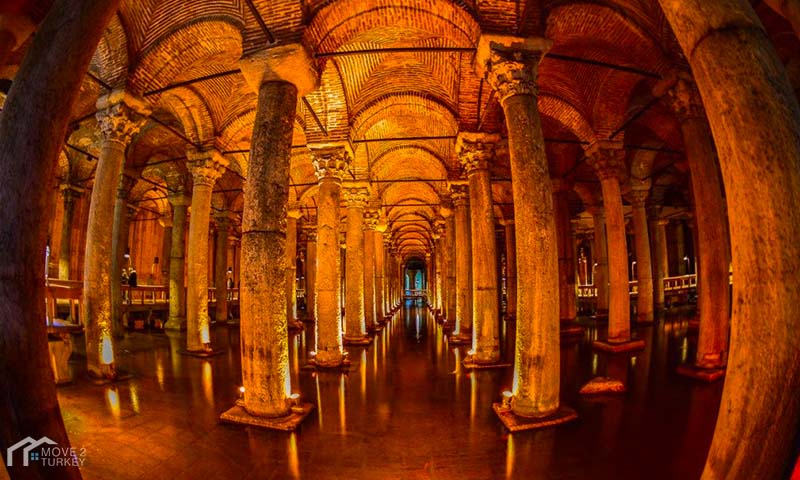
Istanbul has become one of the most attractive tourist destinations in the world, a city that has a unique blend of historical and modern attractions. Where when you walk in the alleys of this city, sometimes you see minarets and domes of ancient mosques, and sometimes elegant and modern buildings, which gives you a special magic you have not seen before.
If you travel to this city or if you are interested in historical monuments, know that you have chosen a very suitable destination, as you will find a variety of ancient tourist areas in Istanbul. You may not have the time to visit all of them, and therefore in this article we want to present to you one of the most beautiful sights of the city, which is the submerged palace or the Basilica Cistern.
A historical look at the Basilica Cistern
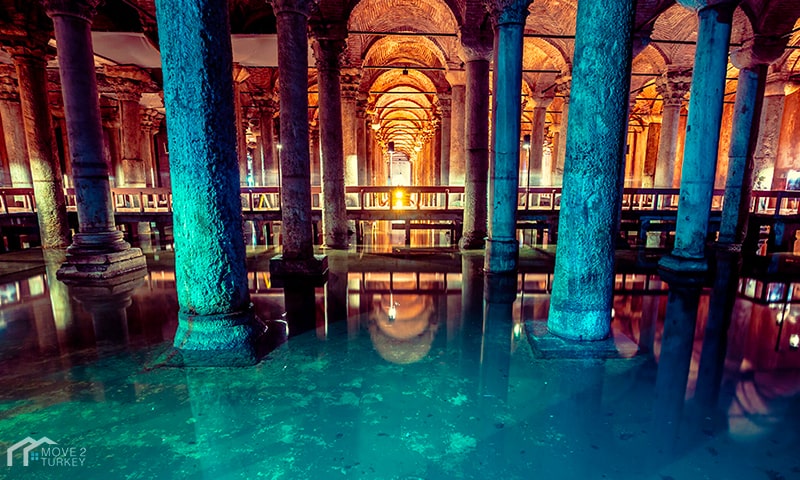
The Basilica Cistern was built by order of the Byzantine Emperor Justin I in the year 532 AD, and this Cistern occupies an area of 138 meters in length and 6.64 meters wide covering an area of about 1000 square meters.
This Cistern is able to absorb 80 thousand cubic meters of water, and it should be noted that a lot of effort has been made in building this historic building, with 336 marble pillars of 9 meters in length in 28 rows.
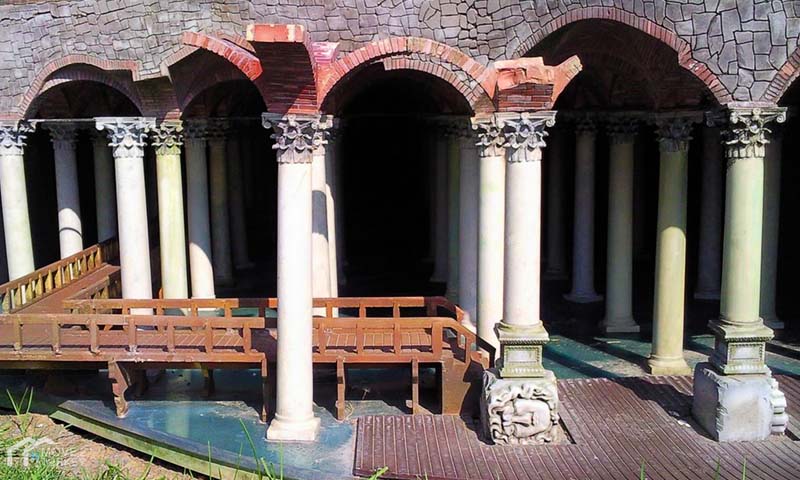
Most of these columns are said to be made from recycled materials from very old buildings, such as the remaining materials from an important landmark building such as Hagia Sophia or from various parts of the Byzantine Empire, for the purpose of cost saving.
One of the most prominent examples of this recycling is the reuse of famous Medusa statues as a base for columns on the northwestern side of the Cistern.
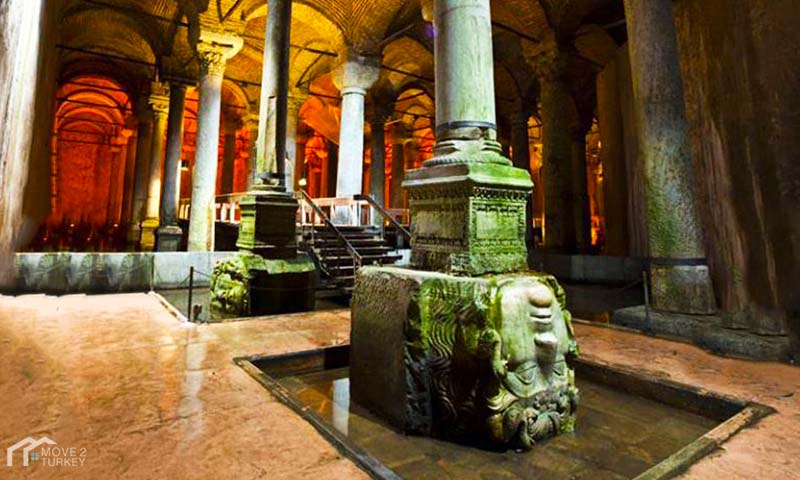
The important point in the Basilica Cistern is that the common people believe that this cathedral was built around the third or fourth century BC and was destroyed immediately after the destruction of Constantinople in the revolts of Nica (532 AD).
The reconstruction of the cathedral’s Cistern was on the agenda of the Emperor Justinian’s restoration project, but unlike the Cistern, the cathedral itself no longer exists today.
Learn about the Basilica Cistern in Istanbul
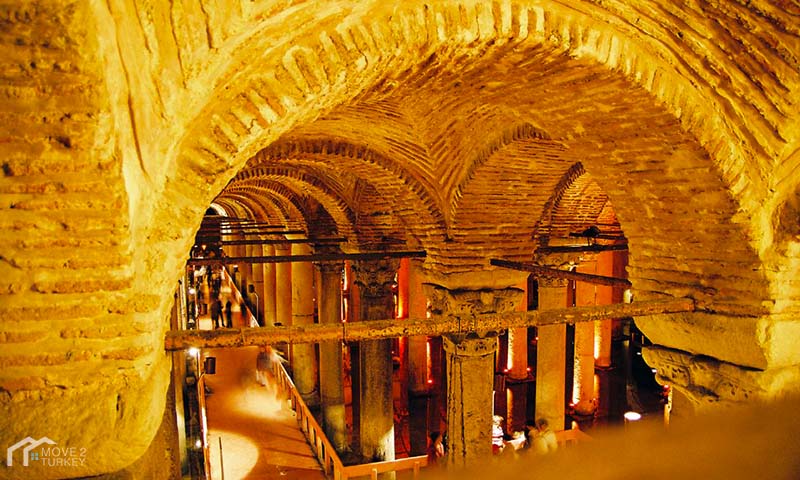
Basilica Cistern “Yerebatan Sarnıcı” in Turkish means the reservoir that sank in the ground and is located 150 meters southwest of Hagia Sophia, it is important to know that it’s one of the most wonderful buildings in Istanbul.
It is worth noting that there are hundreds of old water cistern hidden under the city of Istanbul, which in the distant past was a source of water supply for citizens who lived in these areas, and the largest of these buildings is the Basilica Cistern.
This cietern is located below a site that was previously a Roman church, it was called the Basilica Cistern, and this great and historical vault was named after this church, which was once located on the hill of Constantinople (Istanbul Today), not to mention that the Basilica literal meaning is “a place of worship” and indicates Historical texts to the great churches of the Roman Empire, which you will see its magnificence and grandeur by visiting this magical place.
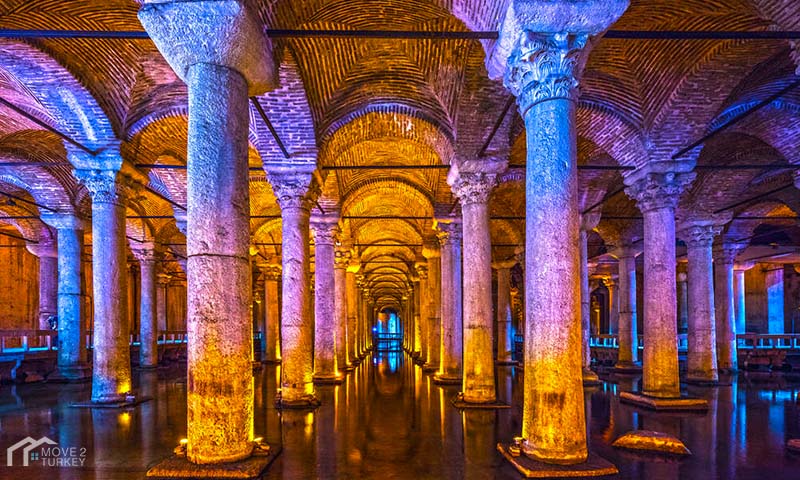
When you walk alongside these columns and the corridors of this mysterious cellar, a strange feeling captures your attention, with the upside down Medusa heads of these columns! That old legendary character. As you will then realize the great historical and archaeological value of Istanbul.
How was the Basilica Cistern discovered?
As mentioned above, the Basilica Cistern was not used in the Ottoman Empire, and until this vault, it was forgotten for a long time. Of course due to the instability of anything in that period, this forgetfulness continued only until the middle of the sixteenth century and specifically in 1545 AD, in that time Geologist Petrus Gyllius traveled to Constantinople at the request of the first king in France to research ancient Roman manuscripts.
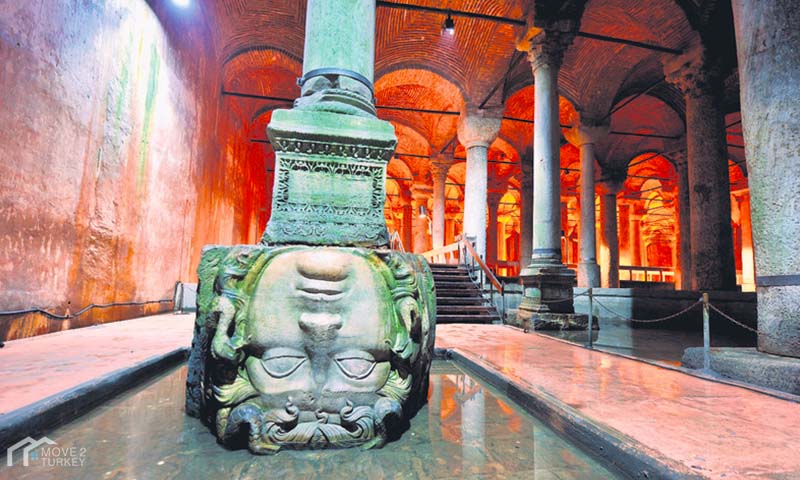
One day Gyllius was wandering around an alleyway near Hagia Sophia, where he heard about a local well called Basilica Cistern. He searched for the locals who claimed they were taking their water from a nearby large basement, and sometimes fishing there. This was the first spark in the mind of Gyllius.
Gyllius, he was very curious about these words, as he went after these allegations to find out what was going on, entered the wooden building there and went to the basilica basement, after going down the stairs of this very cold cellar. He was surprised by the greatness of this place, where he saw many marble pillars, then “Petrus Gyllius” boarded a boat to discover as much as possible about this cellar.
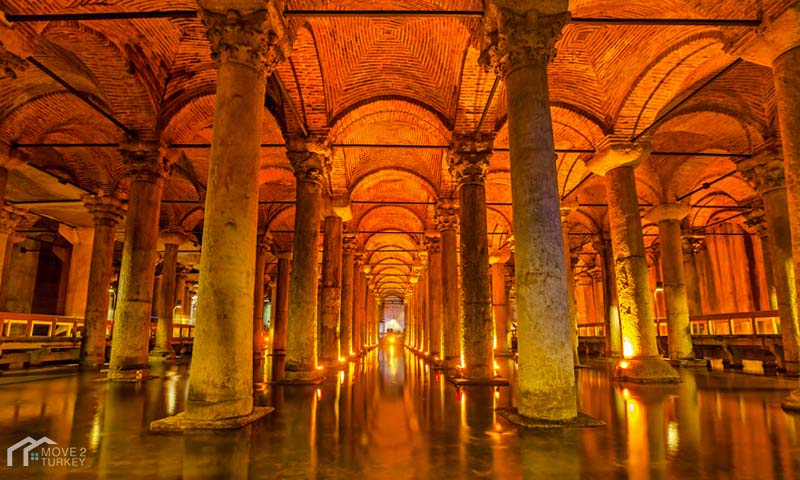
Gyllius then collected all the information and details. He published it later about his journey.
How to go to the Basilica Cistern
As mentioned above, Basilica Cistern is located in the center of Istanbul and in Sultanahmet district, near the famous Hagia Sophia Museum.
If you choose Hagia Sophia first to visit, head to the museum southwest and you can reach the reservoir in just 5 minutes on foot.
So as you can see, the road to the Basilica Cistern is very easy and it can be easily reached from anywhere in the city, by bus and taxi, and you can also use the Istanbul metro line or the tram if you like.





























